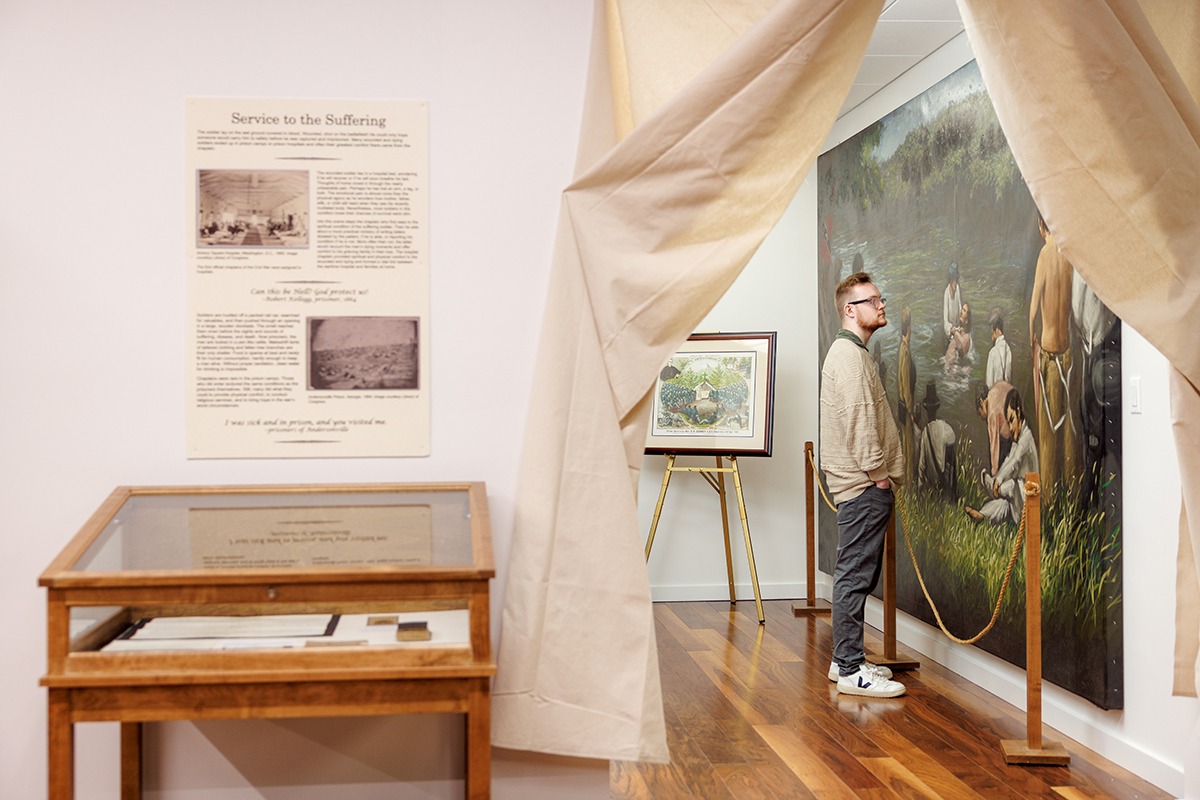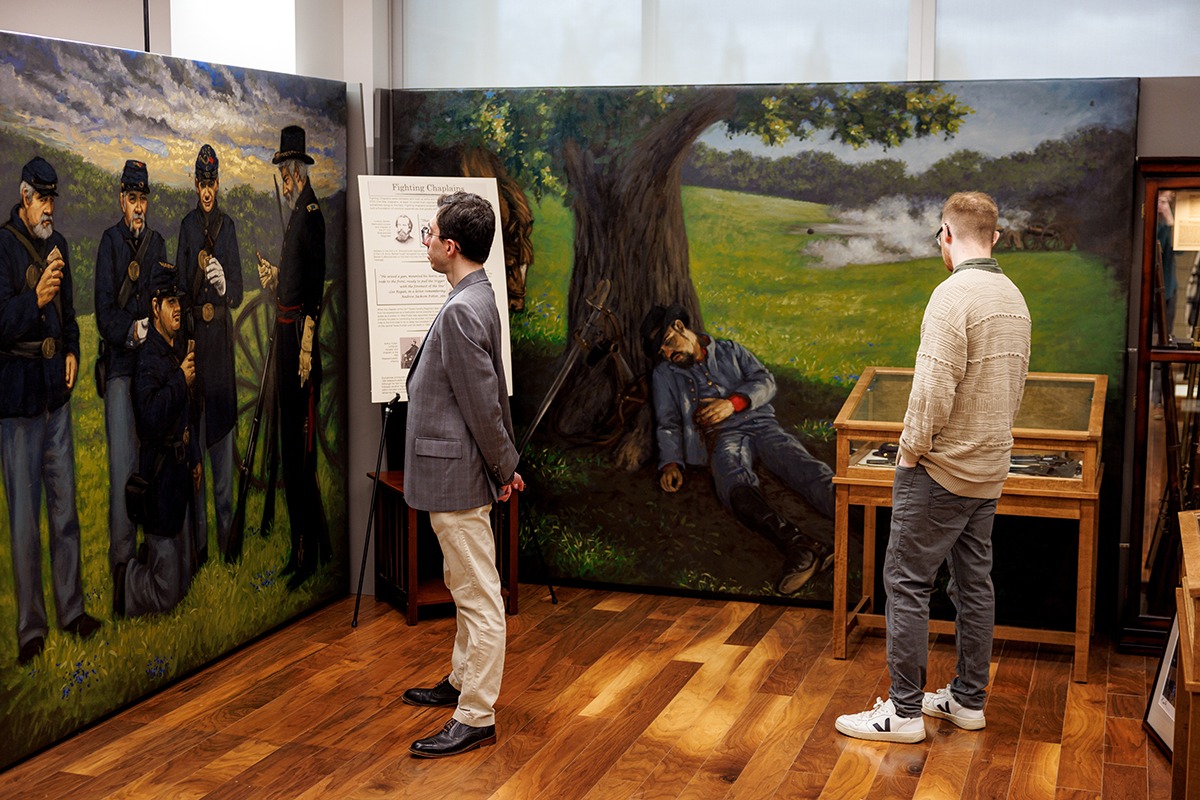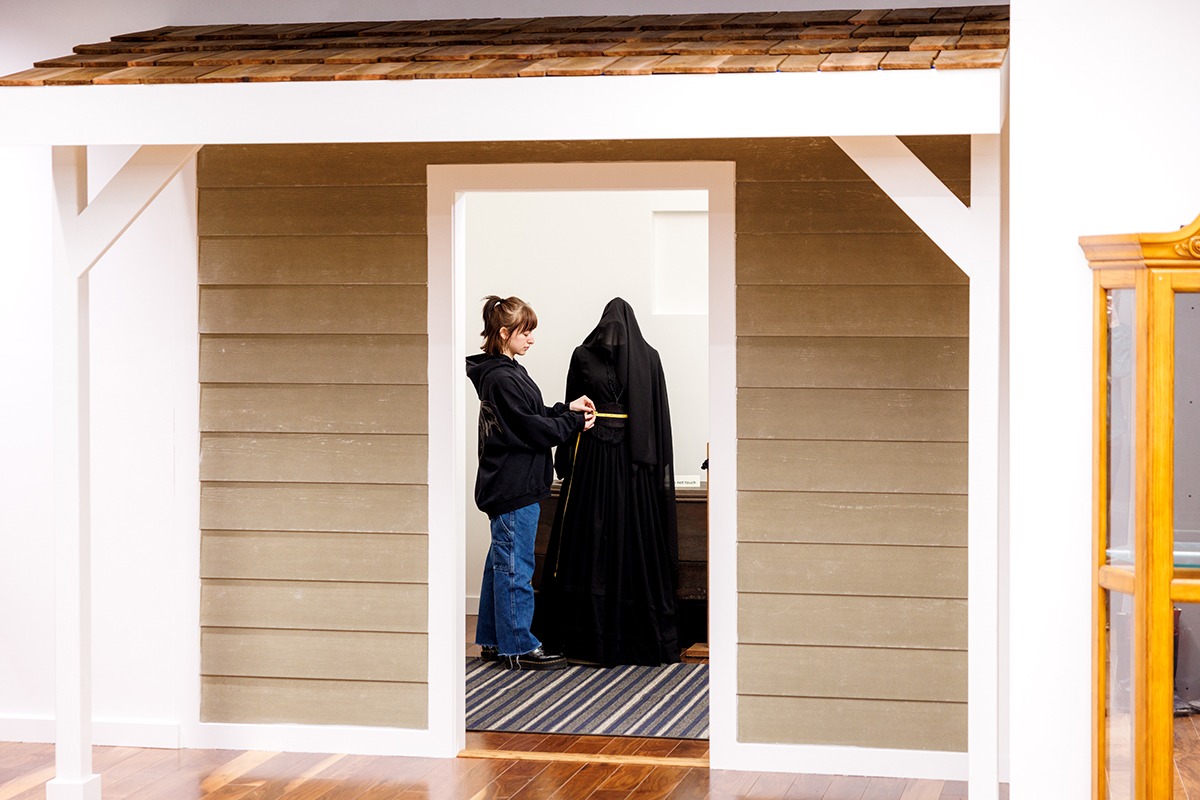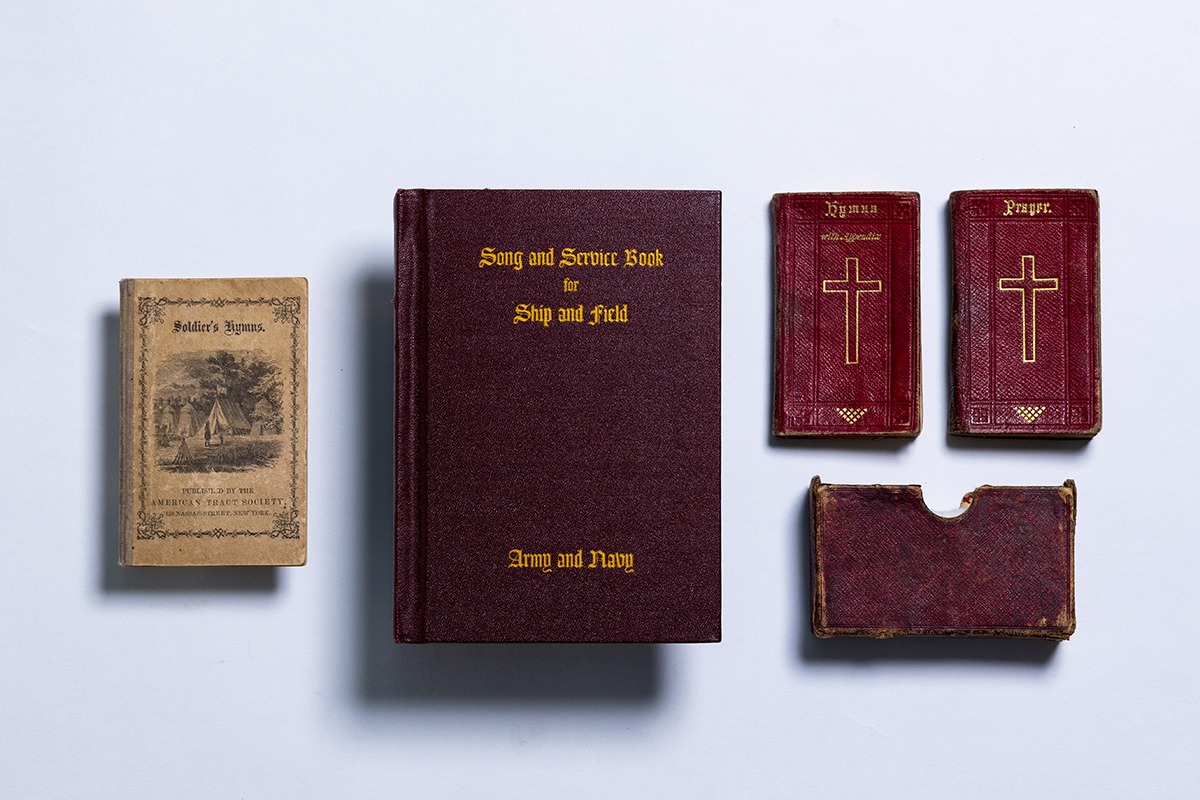Search News Archives
Filter News Articles
Additional Navigation
Chaplains Museum expands, welcomes visitors to new site in Jerry Falwell Library
January 31, 2023 : By Ryan Klinker - Office of Communications & Public Engagement

Inside its new location on the terrace level of the Jerry Falwell Library, the Liberty University Chaplains Museum aims to further educate and inspire visitors with research and artifacts that tell the story of military chaplains in wartime.
The museum was founded on Liberty’s campus in 2005 by the late English professor Kenny Rowlette and a group of interested community members. It was first located in DeMoss Hall before moving to a dedicated space next to what is now Slim Chickens and, most recently, to the carriage house behind the Worley Prayer Chapel. It was originally focused solely on Civil War chaplains.
“We’re retaining the themes from the original museum and adding new material to include chaplains from all U.S. military conflicts,” said Donna Davis Donald, a history professor and Liberty’s director of public history initiatives. “We’ll have a lot of Civil War items and Civil War stories, but we are working on adding more items and developing interpretations for other wars.”
The new museum space officially re-opens to the public at an open house from 1-5 p.m. on Feb. 3. Visitors can meet current and retired chaplains, representatives of Liberty’s Center for Chaplaincy, and learn more about the university’s ongoing public history projects in the Lynchburg area.

Around each corner of the museum is another opportunity to learn a new aspect of chaplaincy and the role religion has had in the U.S. military. Guests will find displays on the history of chaplaincy; various documents and items related to chaplains, including bibles, hymnals, tracts, and photographs; and information on chaplains’ battlefield service, auxiliary organizations that partner with chaplains, diversity in chaplaincy in terms of religion, culture, and means of serving; and ministering in hospitals and prisons.
One section of the museum has been designated for information on revivals and evangelical, Christian ministry. Whereas much of the museum is focused on the field of chaplaincy, Donald said she wants this room to bring visitors into conversations about the Gospel.
“Out (in the rest of the museum) we will cover all of the chaplains, but in this room we really want to talk about those who were devoted to the ministry for the Gospel of Christ,” she said. “We will include conversion stories of soldiers and talk about how service in the military, especially in wartime, has drawn people to faith.”

Students from the history department and other academic programs have been directly involved in creating the displays and conducting research through class projects or individual work. The museum is staffed by student workers who welcome visitors and lead tours.
In one corner of the museum is a display that resembles the exterior of a house and focuses on the way chaplains minister to military families and troops on the home front. An interior design student has plans to transform the room into a recreation of a 19th century parlor, and a fashion design student will be creating an authentic mourning gown for a section about burial services. Also, a music production student is in the process of making a track of 19th- and early 20th-century hymns to play over the museum’s sound system.
“This museum provides a means for students of history and other fields to have a practical center for their research interests,” Donald said. “It’s obvious that our history students would want to do research here, but I think government, law, fashion design, religion, digital media, marketing, and more would be able to find opportunities here, too.”
The topic of military chaplains is not always immediately appealing to some, but Donald said that she has witnessed countless visitors develop a genuine interest and curiosity as they walk through the museum.
 “Some students aren’t enthusiastic at first when they have to come here for a class, but I have seen over and over again how, by the end of their tour, they don’t want to leave,” she said. “They’re peppering the tour guides with questions, they’re asking if they can go back to look at a section again, and they’re learning just how interesting it all is. Being able to see this in person makes a huge difference.”
“Some students aren’t enthusiastic at first when they have to come here for a class, but I have seen over and over again how, by the end of their tour, they don’t want to leave,” she said. “They’re peppering the tour guides with questions, they’re asking if they can go back to look at a section again, and they’re learning just how interesting it all is. Being able to see this in person makes a huge difference.”
The Chaplains Museum is open noon to 4:30 p.m. Monday through Friday and from 10 a.m. to 2 p.m. on Saturdays. The museum is available for individualized tours to LU departments. For more information, visit chaplainsmuseum.org, call (434) 582-7090, or email chaplainsmuseum@liberty.edu
For information on donating photographs, documents, or images related to chaplains, email ddonald@liberty.edu.


